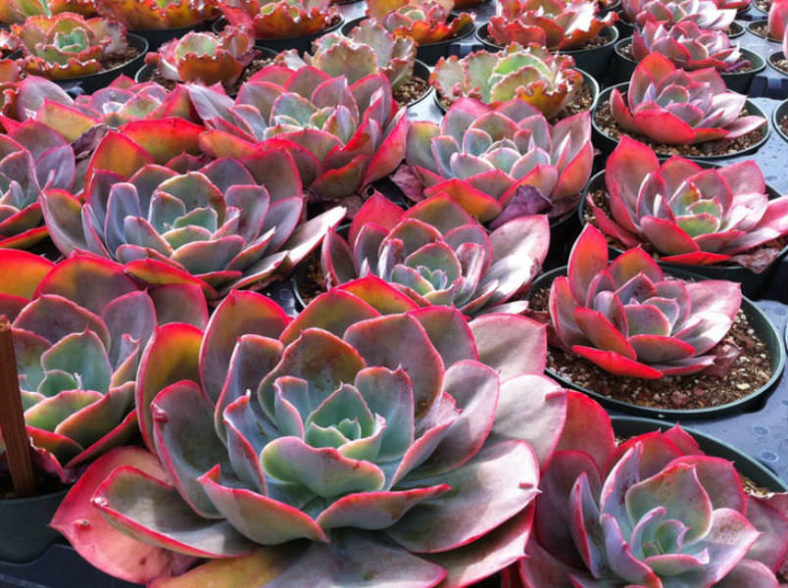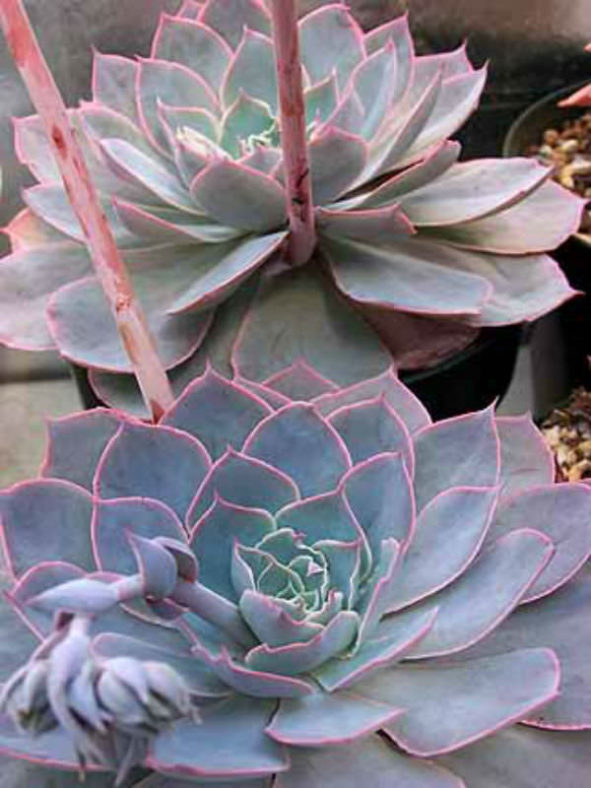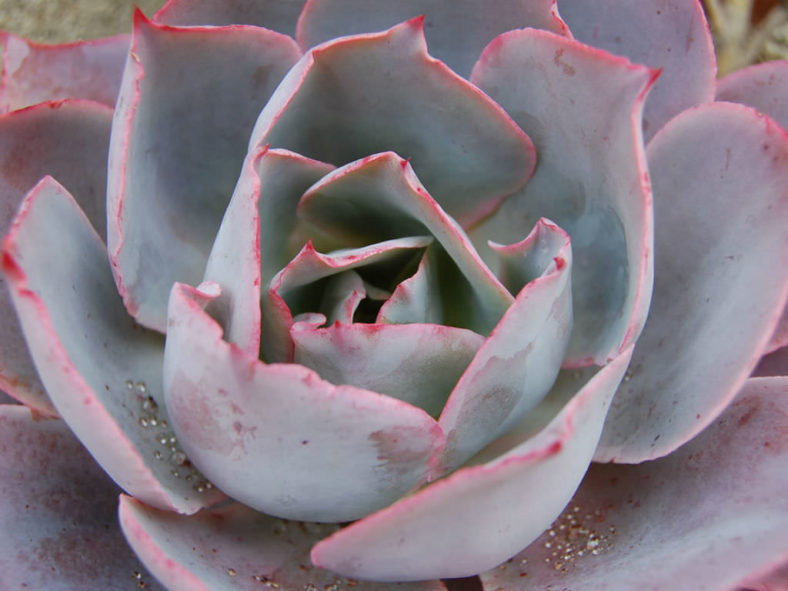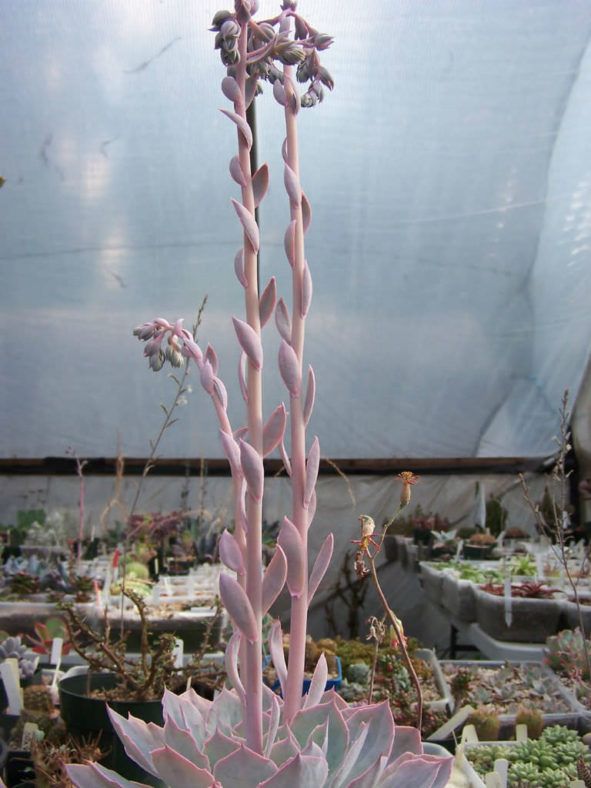Scientific Name
Echeveria 'Morning Light'
Scientific Classification
Family: Crassulaceae
Subfamily: Sempervivoideae
Tribe: Sedeae
Genus: Echeveria
Origin
Echeveria 'Morning Light' is a hybrid created by Don Worth from the San Francisco Bay Area in Northern California, United States. It results from a cross between Echeveria cante and Echeveria shaviana and is a sister seedling to Echeveria 'Afterglow' and Echeveria 'Morning Star'.
Description
Echeveria 'Morning Light' is a succulent plant that forms lovely rosettes of thick, fleshy leaves with pale blue, pink, or lilac tones, dark pink edges, and a nice powdery coating. The rosettes can reach a diameter of up to 8 inches (20 cm).
The flowers are orange-red and appear in arching clusters on erect stalks in summer.

Hardiness
USDA hardiness zones 9a to 11b: from 20°F (-6.7°C) to 50°F (10°C).
How to Grow and Care
Most common Echeveria species are not complicated succulents to grow, provided you follow a few basic rules. First, be careful never to let water sit in the rosette, as it can cause rot or fungal diseases that will kill the plant. Additionally, remove dead leaves from the bottom of the plant as it grows. These dead leaves provide a haven for pests, and Echeverias are susceptible to mealybugs. Finally, as with all succulents, maintaining careful watering habits and providing ample light will help ensure success.
Repot as needed, preferably during the warm season. To repot a succulent, ensure the soil is dry before repotting, then gently remove the pot. Knock away the old soil from the roots, removing any rotted or dead roots. Treat any cuts with a fungicide.
Most Echeverias can be easily propagated from leaf cuttings, although some are better from seeds or stem cuttings. To propagate a leaf cutting, place the individual leaf in potting soil for succulents and cover the dish until the new plant sprouts.
Learn more at How to Grow and Care for Echeveria.
Links
- Back to genus Echeveria
- Succupedia: Browse succulents by Scientific Name, Common Name, Genus, Family, USDA Hardiness Zone, Origin, or cacti by Genus
Photo Gallery
Click on a photo to see a larger version.


